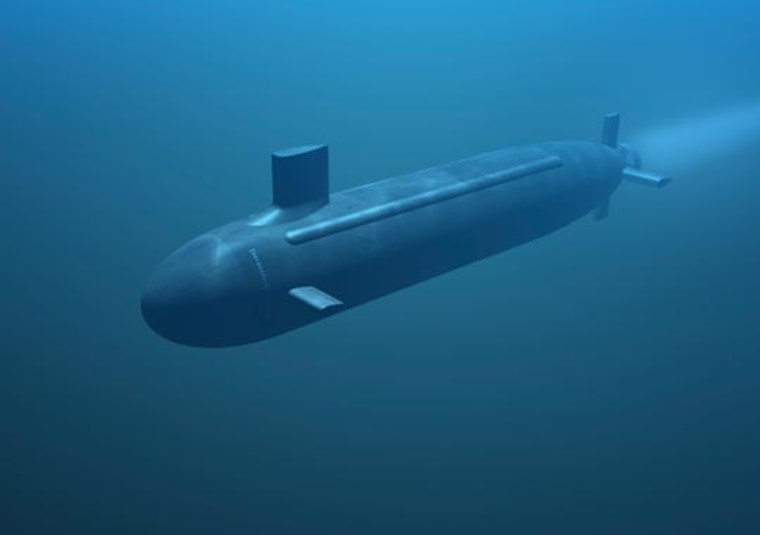Shooting laser beams at a submarine won't destroy it, but new technology being tested by the U.S. Navy could help find enemy subs.
"Instead of dumping hardware (into the ocean) you could shoot a light pulse into the water and generate acoustic signals," said Ted Jones of the Naval Research Laboratory, who presented his results at a recent meeting of the Acoustical Society of America.
"With this, you could do communications, acoustic navigation beacons or sonar."
The Navy scientists induce sound waves with lasers using two distinct, but similar techniques. Both techniques employ machines to create pulsed green lasers.
Both techniques penetrate the water anywhere from a few millimeters to about 66 feet deep. Once the laser reaches the desired depth, both techniques flash boil a tiny area of water, which expands to the size of a BB.
The manner in which this reaction is created is what separates the two techniques. The first technique spreads energy over time. The second spreads energy over space.
The first method blasts several different wavelengths of light. Each wavelength travels at a slightly different speed through air and water. When all of the wavelengths catch up with one another, the concentrated energy boils the water.
The second methods shoots the same wavelength of light, but over a wide area. The water acts like a lens, focusing the laser beams onto one specific area, which then boils.
The shock wave created by either method can travel several miles and can be used for several purposes. One would be for one-way communication with underwater vessels. Triggering pressure waves in a specific order could allow a plane to communicate with underwater vessels via basic Morse code, or, more likely, says Jones, with a complex, encoded pattern of pulses.
Another use for laser-induced sound waves would be for mapping the ocean floor. When they hit a submerged object, the pressure waves bounce back. A nearby submarine or buoy could detect the pattern of those waves and create a map of the ocean floor, or the location of other submarines in the area.
All of this could be possible with laser-triggered sonar, if it is ever used in the field. For now though, Jones' experiments are limited to the laboratory.
Although Vogel thinks there are still several issues that would need to be resolved before the technique could be used in the field, "this may be a unique approach that could achieve something that you cannot achieve by other means."
